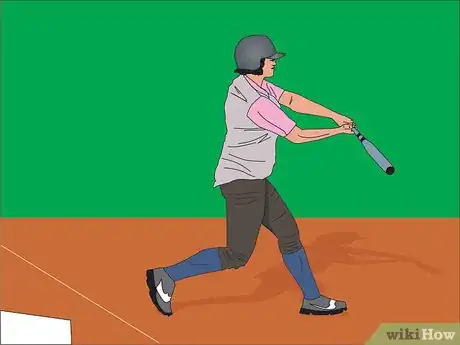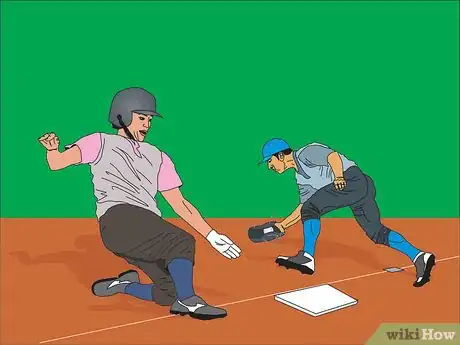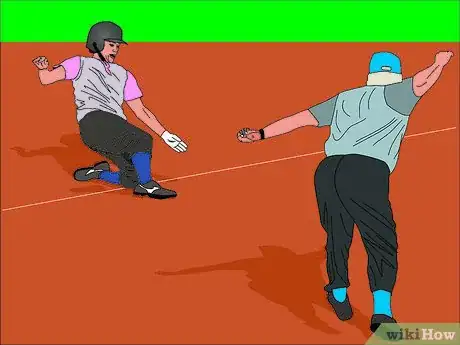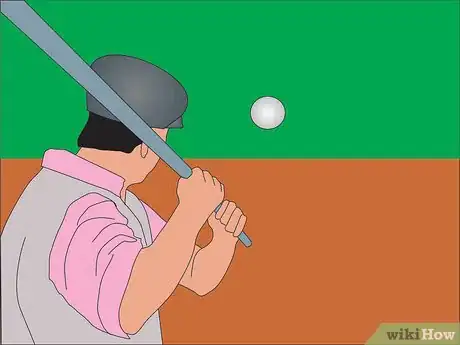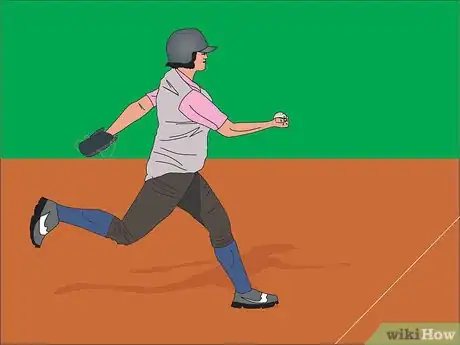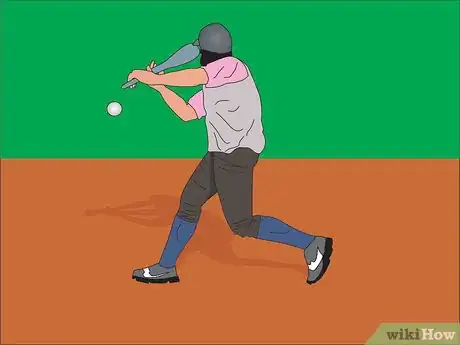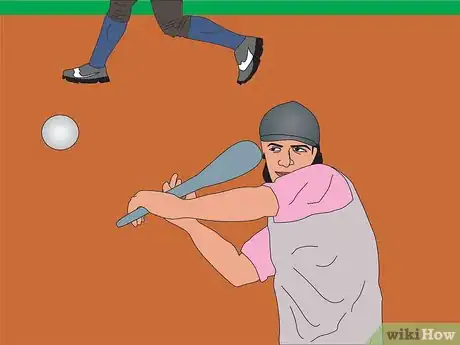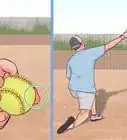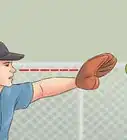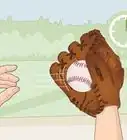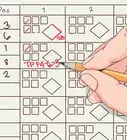Explore this Article
IN THIS ARTICLE
Other Sections
X
wikiHow is a “wiki,” similar to Wikipedia, which means that many of our articles are co-written by multiple authors. To create this article, 15 people, some anonymous, worked to edit and improve it over time.
This article has been viewed 93,571 times.
Learn more...
Thinking about trying a new position in softball? First base could be great to learn, especially if you like being in the middle of the action. We're here to walk you through everything you need to know about this busy position, so you can showcase your skills during your next game.
Steps
1
Know how first base is different from other positions.
-
The largest difference is that you're involved in nearly every ball hit to an infielder. You're required to catch balls that may or may not be thrown accurately and you're expected to make difficult "scoops" look routine. You'll do less throwing than the other infielders but when you do throw, it won't usually be an easy play and will need to be accurate.
Advertisement
2
Start by positioning yourself correctly.
-
Get ready to catch the ball. Remember that if a ground ball is hit to the second baseman, third baseman, pitcher or shortstop, they're going to be throwing it to you very soon. As soon as a ground ball is hit to someone other than you, sprint to first base and position yourself with your foot opposite your glove hand (i.e., right foot if you catch with left hand and are thus "right-handed" and the other way around for lefties) against the edge of the base.
- Do not put your foot on top of the base or you'll end up with a broken ankle when the runner spikes you.
3
Adjust your position depending on the hitter.
-
Play a little deeper than the base if it's a right-handed hitter and a few steps further back for a left-handed hitter. Remember not to stray too far from the base, though, since you'll need to be able to get there quickly. If you're left-handed, play a bit closer to the foul line since anything hit down the line will be a "backhand" play for you. Conversely, if you're right-handed, you can play "off the line" a bit more since balls hit down the line will be easier for you to snag since your glove hand will be nearer to them.
Advertisement
4
Get to the base quickly when awaiting a throw from an infielder.
-
Make sure you've located the base and put your foot on it. This will entail taking your eyes off the play to find the base (you don't want to be feeling around for it with your foot). Once you're in position to catch the ball, bring your glove up and open it as wide as your hand will allow, giving your fielder a big target and confidence that you'll be catching the ball. Reach toward the fielder so that the ball is in your glove as soon as possible in case there's a close play at first.
5
Position yourself low to catch a ball that's going to bounce.
-
Stand almost like a catcher, ensuring that you will block the ball and maybe even catch it in your gut. Remember, as long as you hold on, it's an out provided you get the ball in your hand or glove before the batter-runner reaches first base (note that trapping the ball against your gut is not yet a catch).
Advertisement
6
Be prepared to think quickly.
-
If a fielder throws wide of you, you'll need to make a split-second judgment call. If you think you can stretch and reach the throw, then do so, keeping your foot on the base and reaching out, timing your stretch so that if you fall, it is just a second after you'll have caught the ball and recorded the out. If there's no way you'll be able to reach it, leave the base and stop the ball from going past you. While this isn't ideal, obviously, it will keep the runner from moving on to second or third base.
7
Master the "scoop" technique.
-
Good first basemen make scooping low throws an art. Typically, you'll know when a ball will potentially need to be scooped, especially if you play with the same infielders for a while and get familiar with their throwing habits. If a ball is thrown your way but is low and may or may not bounce just before reaching you, position your glove with your wrist facing up and the glove wide open, with the webbing of your glove touching the dirt. It is instinct to react upwards to protect yourself, but you have to react to reach down to the dirt. Most short-hops will bounce into your glove in this scenario. Scooping the ball is something that comes with practice and a lot of playing first base.
Advertisement
8
Make catching your first priority if no one is on base.
9
Weigh your options if the ball is hit to you on the ground while runners are on base.
-
You have 2 choices to choose from when you're in this position. A) If there is a force play at the other bases, you may want to consider throwing there to get multiple outs or to get the "lead runner" out. B) If you simply want to get outs (or if there are two outs already) and not take risks, just get the out at first and then be ready to go after any base runners who are venturing far off of other bases.
- Keep in mind how accurate your aim is before you make the play.
Advertisement
10
Try the Tag & Bag technique as you get better at first base.
11
Go for a Tag & Bag triple play when the opportunity presents itself.
-
With this play, you have runners on first and second or the bases are loaded with no outs. Once you have executed the Tag & Bag, you can make an immediate throw to third or home. If you get the ball there before the advancing runner, the fielder will need to make a tag. If practiced and executed you will have yourself a triple play!
Advertisement
12
Back up the other infielders.
-
As a first baseman, you're involved in nearly all infield plays. However, you're involved in very few outfield plays. If a ball is hit into the outfield and there may be a play at second base, third base or home plate, be ready to back up those bases in case a throw gets loose. This is fundamental baseball/softball.
Warnings
- As mentioned earlier, do not cover first base with your foot on top of the actual base or you will definitely get stepped on. Instead, learn how to put your foot on the edge of the base, either flat on the ground or with your spikes on the edge.⧼thumbs_response⧽
- If you don't want to collide with other fielders when catching a pop fly, yell "ball", or "I got it!" and they will let you catch it.⧼thumbs_response⧽
- Remember to stretch before playing first base.⧼thumbs_response⧽
- Do not make the mistake of keeping your foot on the bag when it it obvious that the ball has escaped the infield. If the hitter rounds first and you are on the bag, you are in his way, and may be called for obstruction, (or knocked over). Your best bet is to run about 5 feet (1.5 m) inside the bag, (toward the pitcher) to let them pass. Then sneak in behind them and cover the bag in case the cut off man decides to throw behind the runner and pick him off at 1st.⧼thumbs_response⧽
- Collisions happen at first base more often than people think. A ball thrown high and wide by a fielder may cause you to reach and/or lean into the base path and, thus, into the path of the oncoming runner. If this happens, brace yourself for a collision and do your best to hold onto the ball.⧼thumbs_response⧽
Advertisement
Things You'll Need
- A first baseman's mitt is a recommended tool for any serious first baseman. The first baseman's mitt is larger than any other glove and is only legal to be worn at the positions of first base and catcher, even in recreational slow-pitch softball leagues.
You Might Also Like
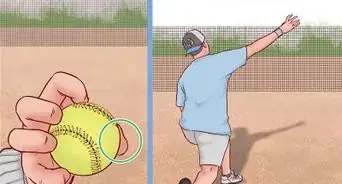
How to
Pitch in Slow‐Pitch Softball
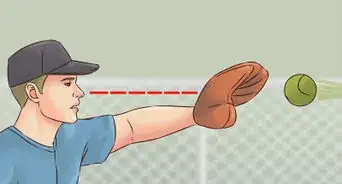
How to
Play Softball

How to
Break in a New Baseball Glove
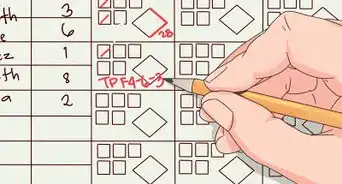
How to
Keep Score for a Softball Game
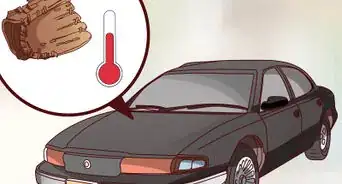
How to
Break in a Softball Glove

How to
Buy a Girl's Softball Bat

How to
Hit the Ball Properly in Softball
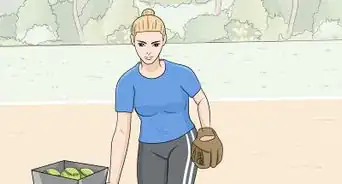
How to
Pitch a Fast Pitch Softball
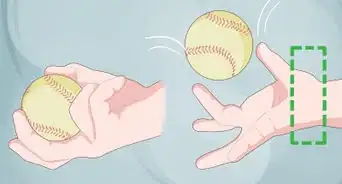
How to
Throw a Changeup in Fast Pitch Softball
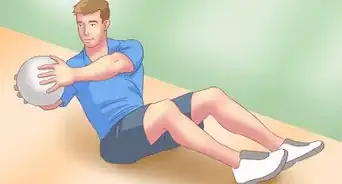
How to
Swing a Softball Bat
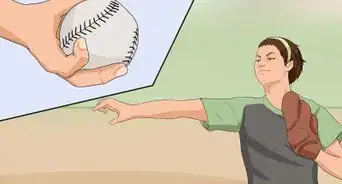
How to
Throw a Softball

How to
Dress for Softball
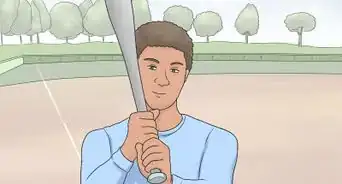
How to
Grip a Softball Bat
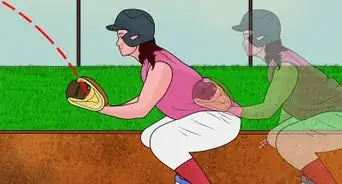
How to
Catch a Softball
Advertisement
About This Article
wikiHow is a “wiki,” similar to Wikipedia, which means that many of our articles are co-written by multiple authors. To create this article, 15 people, some anonymous, worked to edit and improve it over time. This article has been viewed 93,571 times.
48 votes - 81%
Co-authors: 15
Updated: February 16, 2023
Views: 93,571
Categories: Softball
Advertisement


